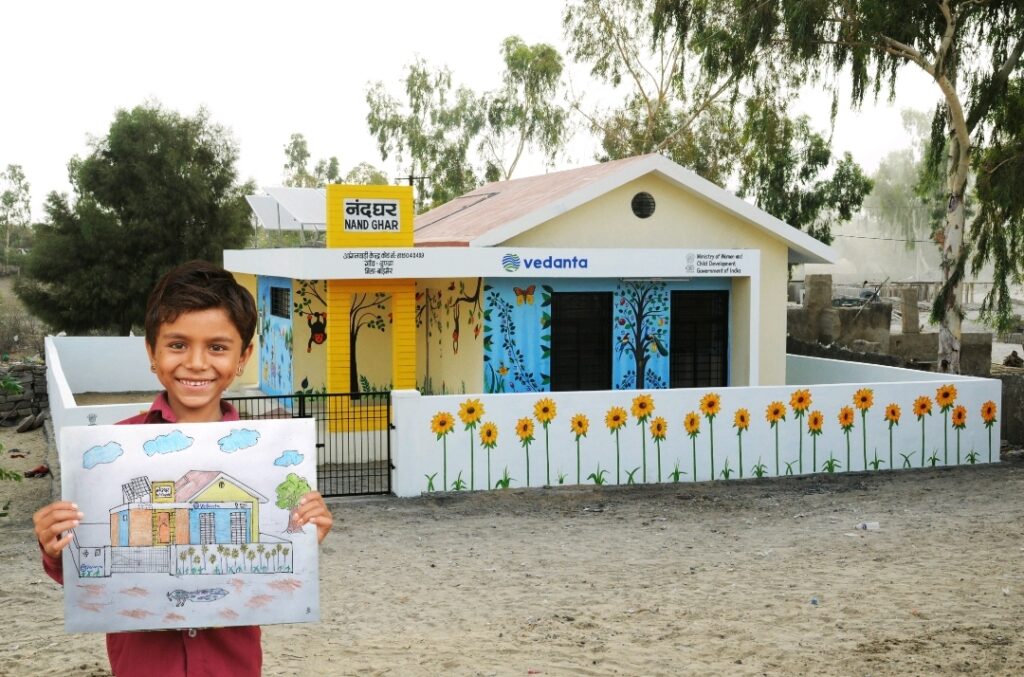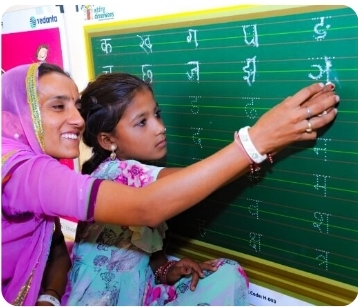Transforming Rural Experience: Vedanta’s Nand Ghar and Lessons for CX-EX Professionals
In the world of customer experience (CX) and employee experience (EX), the challenge is often how to create meaningful, consistent, and transformative interactions. This is especially true in complex environments driven by social impact and community engagement. Vedanta’s Nand Ghar initiative offers a powerful real-world example, not just in corporate social responsibility (CSR), but as a landmark model for designing human-centered, integrated experiences for multiple stakeholders—children, women, local communities, and government partners.
When Vedanta’s flagship social impact program crossed the milestone of 10,000 Nand Ghars across 16 Indian states, it wasn’t just a number but a reflection of profound systemic transformation. Serving over 400,000 children and 300,000 women daily, these modernized Anganwadis are reshaping early childhood development and rural empowerment through holistic care, education, and skill-building—ultimately raising the bar for CX and EX in community ecosystems.
The Real-World Challenge: Rethinking Traditional Anganwadis
Traditional Anganwadis in rural India have long been criticized for lack of infrastructure, inconsistent service delivery, and limited engagement. These early childhood centers are fundamental to child nutrition, health, and pre-school education but often fall short due to lack of resources and technology. With multiple stakeholders including government agencies, local communities, and CSR partners involved, delivering uniform and impactful experiences poses huge challenges.
Vedanta’s Nand Ghar tackles these issues head-on by infusing technology, infrastructure, and community-oriented programs into the Anganwadi system. This approach creates seamless experiences for children ages 3–6 by providing digital learning, proper nutrition, hygiene, and healthcare, while simultaneously engaging and empowering women through vocational skill development.
By addressing systemic pain points—unreliable electricity, unsafe drinking water, and outdated facilities—Nand Ghar ensures a safe, inspiring, and inclusive environment. This enables children to thrive and mothers to trust the system, addressing both emotional and practical CX factors at the grassroots.
Integrated Experiences for Children, Women, and Communities
One of the most compelling aspects of Nand Ghar is its dual-use design that maximizes impact throughout the day. In the morning, it functions as a preschool with smart classrooms, digital learning tools, and nutrition programs. In the afternoon and evening, the same facilities transform into hubs for women’s skill training, including tailoring, digital literacy, and handicrafts.
This not only optimizes asset use but solves a critical barrier to women’s economic participation: lack of childcare. Women can enhance their employability and income potential while knowing their children are safe and learning in a nurturing environment.
The initiative also integrates health check-ups, immunization drives, and awareness campaigns into the community calendar, thereby creating a multi-dimensional experience that promotes community well-being as a collective goal.
Data-Backed Impact and Expert Commentary
The scale and impact of Nand Ghar are staggering. Over 80 lakh nutrition supplements have been distributed, health screenings cover nearly 90 lakh community members, and thousands of women earn up to ₹10,000 per month through vocational training. Rajasthan alone is set to have 25,000 Nand Ghars in the next two years.
Anil Agarwal, Chairman of Vedanta Group, underscores the vision behind this initiative: “Each Nand Ghar is a symbol of empowerment, education, and aspiration.” Such integrated community experiences aligned with government schemes demonstrate how private-public partnerships can unlock scalable social change.
Sunita Devi, a Nand Ghar worker, shares, “Before Nand Ghar, our Anganwadi was just a small room. Today, it is the pride of our village! Children love coming here, and mothers trust us more than ever.” Her testimony resonates with the broader CX and EX lessons—trust and pride are irreplaceable pillars of sustained engagement.
Lessons for CX and EX Professionals
1. Design Holistic Journeys Across Stakeholders
Nand Ghar exemplifies how layering multiple experiences across different user groups (children, women, and local residents) creates a rich ecosystem of engagement. CX and EX professionals can adopt this approach by mapping intertwined journeys and ensuring seamless transitions across touchpoints.
2. Leverage Technology for Empowerment
The initiative’s use of digital classrooms, smart TVs, and e-learning kits shows how technology can elevate the quality and reach of services exponentially, especially in underserved communities. CX leaders should integrate smart tech solutions that empower users rather than simply automate processes.
3. Build Trust Through Consistency and Quality
Trust grows when service experience is consistent, reliable, and visibly improves lives. For Nand Ghar, reliable electricity, hygiene, and nutritious meals have built deep community confidence. EX leaders can learn the importance of consistently delivering quality workspaces and resources for employees to foster similar trust.
4. Create Dual-Purpose, Efficient Spaces
Nand Ghar’s dual-use model ensures resource optimization while addressing key community needs. CX and EX professionals can innovate by designing multi-functional spaces and offerings that serve diverse user needs without redundancy.
5. Partner for Scale and Sustainability
Vedanta’s collaboration with government and local bodies demonstrates that scaling social impact requires alignment of goals and shared accountability. CX and EX strategies benefit from such partnerships, ensuring long-term sustainability and reach.

Practical Takeaways for CX/EX Leaders
- Adopt user-centric ecosystem thinking: Look beyond individual touchpoints to the broader environment influencing experience.
- Invest in community and employee empowerment programs: Skills development as part of EX creates advocates who deliver superior CX.
- Integrate technology with empathy: Focus on tech that enhances human connection and learning rather than replacing it.
- Prioritize clean, safe, and inclusive environments: Physical spaces profoundly impact emotional engagement and productivity.
- Measure social impact alongside business metrics: Success in CX/EX includes community well-being and sustainable empowerment.
Vedanta’s Nand Ghar project sets a new benchmark for transforming rural ecosystems through integrated, technology-enabled solutions that improve lives at scale. For CX and EX professionals, it offers a compelling blueprint to create experiences that matter—building trust, community, and empowerment through purposeful, human-centered design.
This landmark initiative challenges us to think bigger about experience design, beyond commercial settings, into the vital social fabric where genuine transformation unfolds.
If your work touches social ecosystems, education, or community empowerment, the lessons from Nand Ghar can inspire fresh strategies to deepen impact and build enduring trust.


